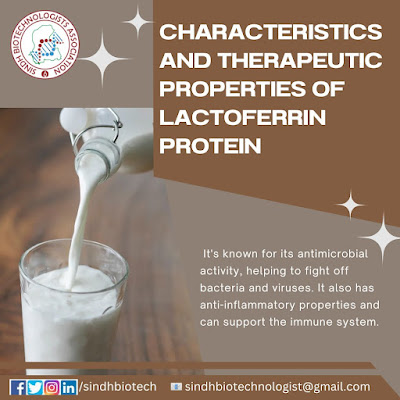Nanomedicine's Virtual Reach: A New Era in Healthcare
In the ever-evolving landscape of healthcare, a quiet revolution is underway, and its name is nanomedicine. This remarkable fusion of nanotechnology and medicine is poised to change the way we understand and approach healthcare. Imagine a world where diseases are detected earlier than ever before, treatments are personalized down to the molecular level, and medicines are delivered with pinpoint accuracy. This is the world that nanomedicine promises to create, and its potential to transform diagnostics, treatments, drug delivery, and disease monitoring is nothing short of revolutionary.
Nanomedicine operates in the realm of the incredibly small—the nanoscale, where particles measure in billionths of a meter. Nanomedicine is the offspring of two powerful fields: nanotechnology and medicine. Nanotechnology deals with crafting materials and structures at the nanoscale and harnessing their unique properties. When combined with medicine, this synergy opens doors to innovative solutions that were once deemed impossible. Nanomedicine's real-time monitoring is like having a team of bodyguards for your health. With nanosensors, your body's secrets are no longer hidden. They're like tiny reporters, sending updates directly to your healthcare team. It's a partnership that keeps you healthy and your doctors informed, all in real time.
Recent Case Studies and Examples
The future of healthcare is here with the incredible impact of nanomedicine. This technology is transforming cancer treatment as we know it. Using tiny nanoparticles, scientists can target cancer cells directly, bringing powerful medicines to the centre of the problem. An exciting breakthrough was recently discovered and shared in "Nature Communications," where nanoparticles coated with a special material were used to effectively deliver chemotherapy drugs. The stickiness of the material made for precise delivery, resulting in minimal harm to healthy cells and greatly reducing unwanted side effects (Weiss et al., 2020).
In the realm of diabetes management, nanosensors are changing the game. A recent leap forward came from Stanford University, where scientists created a skin patch containing nanosensors that constantly monitor diabetes patients' glucose levels. By identifying glucose molecules and transmitting that data to an app on a smartphone, these sensors operate. This real-time data empowers patients to make immediate decisions about their insulin dosage and diet, offering newfound control over their condition (Neborachko et al., 2019).
Future outlook and potential applications
Nanomedicine's journey has just begun, and its potential stretches far beyond our current horizons. Imagine a world where damaged organs can be repaired using regenerative medicine. Nanoparticles could be the builders of the future, guiding cells to heal and regenerate tissue. Neurodegenerative diseases, such as Alzheimer's and Parkinson's, could also face a new dawn. Nanoparticles might hold the key to delivering treatments directly to the brain, where these diseases strike (Yang et al., 2022). In the future, nanomedicine may drastically alter the way we deliver healthcare. Imagine a future where surgeries become less invasive, thanks to tiny robots navigating inside our bodies. Imagine a healthcare system where diseases are detected and treated so early that they hardly cause a ripple. With nanomedicine at the helm, these possibilities are not mere fantasies but achievable goals.
Conclusion
On our journey through the field of nanomedicine, we discover a world of wonder that was once considered science fiction. Nanoparticles are the heroes, delivering precise treatments and catching problems before they happen. The fascination of nanomedicine lies not only in its technological prowess but also in the collaborations it inspires. Scientists, physicians, engineers, and ethicists join forces to advance the field responsibly.
To sum up, the virtual influence of nanomedicine is shaping a new era of healthcare. In this world, treatments are tailored to our individual needs, diseases can be tracked and fought in real time, and the potential for cures is virtually limitless. So let us move forward with enthusiasm and collaboration, knowing that the small miracles of nanomedicine pave the way for a healthier future.
References
Neborachko, M., Pkhakadze, A., & Vlasenko, I. (2019, September). Current trends of digital solutions for diabetes management. Diabetes & Metabolic Syndrome: Clinical Research & Reviews, 13(5), 2997–3003. https://doi.org/10.1016/j.dsx.2018.07.014
Weiss, C., Carriere, M., Fusco, L., Capua, I., Regla-Nava, J. A., Pasquali, M., Scott, J. A., Vitale, F., Unal, M. A., Mattevi, C., Bedognetti, D., Merkoçi, A., Tasciotti, E., Yilmazer, A., Gogotsi, Y., Stellacci, F., & Delogu, L. G. (2020, June 10). Toward Nanotechnology-Enabled Approaches against the COVID-19 Pandemic. ACS Nano, 14(6), 6383–6406. https://doi.org/10.1021/acsnano.0c03697
Yang, Z., Li, Y., & Wang, Z. (2022, March 11). Recent Advances in the Application of Mesenchymal Stem Cell-Derived Exosomes for Cardiovascular and Neurodegenerative Disease Therapies. Pharmaceutics, 14(3), 618. https://doi.org/10.3390/pharmaceutics14030618
By: Asima Haq




Comments
Post a Comment